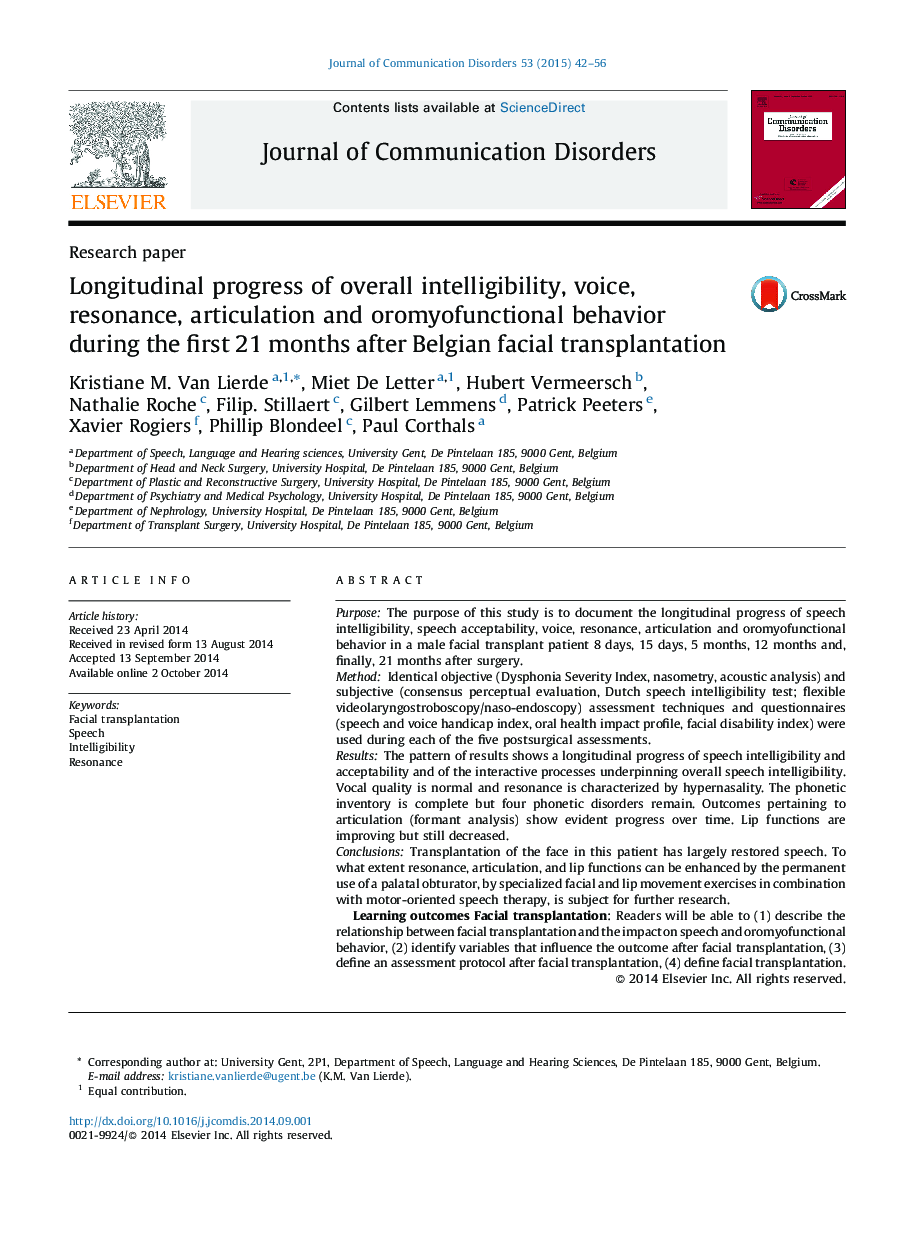| Article ID | Journal | Published Year | Pages | File Type |
|---|---|---|---|---|
| 910747 | Journal of Communication Disorders | 2015 | 15 Pages |
•This study examines the speech in a Ft patient in 5 post-operative moments.•FT showed a process of intelligibility and the underpinning interactive processes.•Disordered production of bilabials is still present 21 months after surgery.•Formant analysis showed evident progress over time.
PurposeThe purpose of this study is to document the longitudinal progress of speech intelligibility, speech acceptability, voice, resonance, articulation and oromyofunctional behavior in a male facial transplant patient 8 days, 15 days, 5 months, 12 months and, finally, 21 months after surgery.MethodIdentical objective (Dysphonia Severity Index, nasometry, acoustic analysis) and subjective (consensus perceptual evaluation, Dutch speech intelligibility test; flexible videolaryngostroboscopy/naso-endoscopy) assessment techniques and questionnaires (speech and voice handicap index, oral health impact profile, facial disability index) were used during each of the five postsurgical assessments.ResultsThe pattern of results shows a longitudinal progress of speech intelligibility and acceptability and of the interactive processes underpinning overall speech intelligibility. Vocal quality is normal and resonance is characterized by hypernasality. The phonetic inventory is complete but four phonetic disorders remain. Outcomes pertaining to articulation (formant analysis) show evident progress over time. Lip functions are improving but still decreased.ConclusionsTransplantation of the face in this patient has largely restored speech. To what extent resonance, articulation, and lip functions can be enhanced by the permanent use of a palatal obturator, by specialized facial and lip movement exercises in combination with motor-oriented speech therapy, is subject for further research.Learning outcomes Facial transplantation: Readers will be able to (1) describe the relationship between facial transplantation and the impact on speech and oromyofunctional behavior, (2) identify variables that influence the outcome after facial transplantation, (3) define an assessment protocol after facial transplantation, (4) define facial transplantation.
